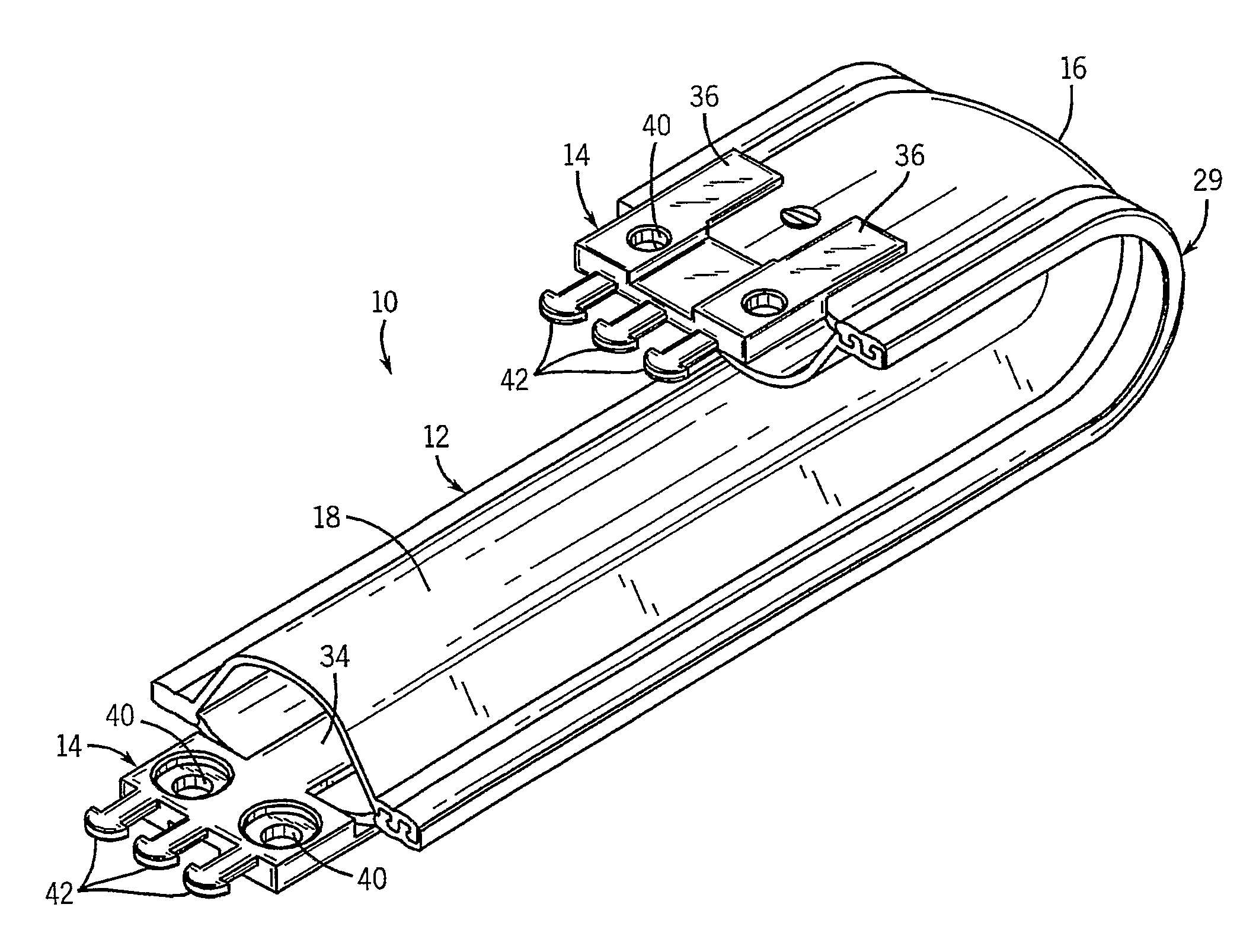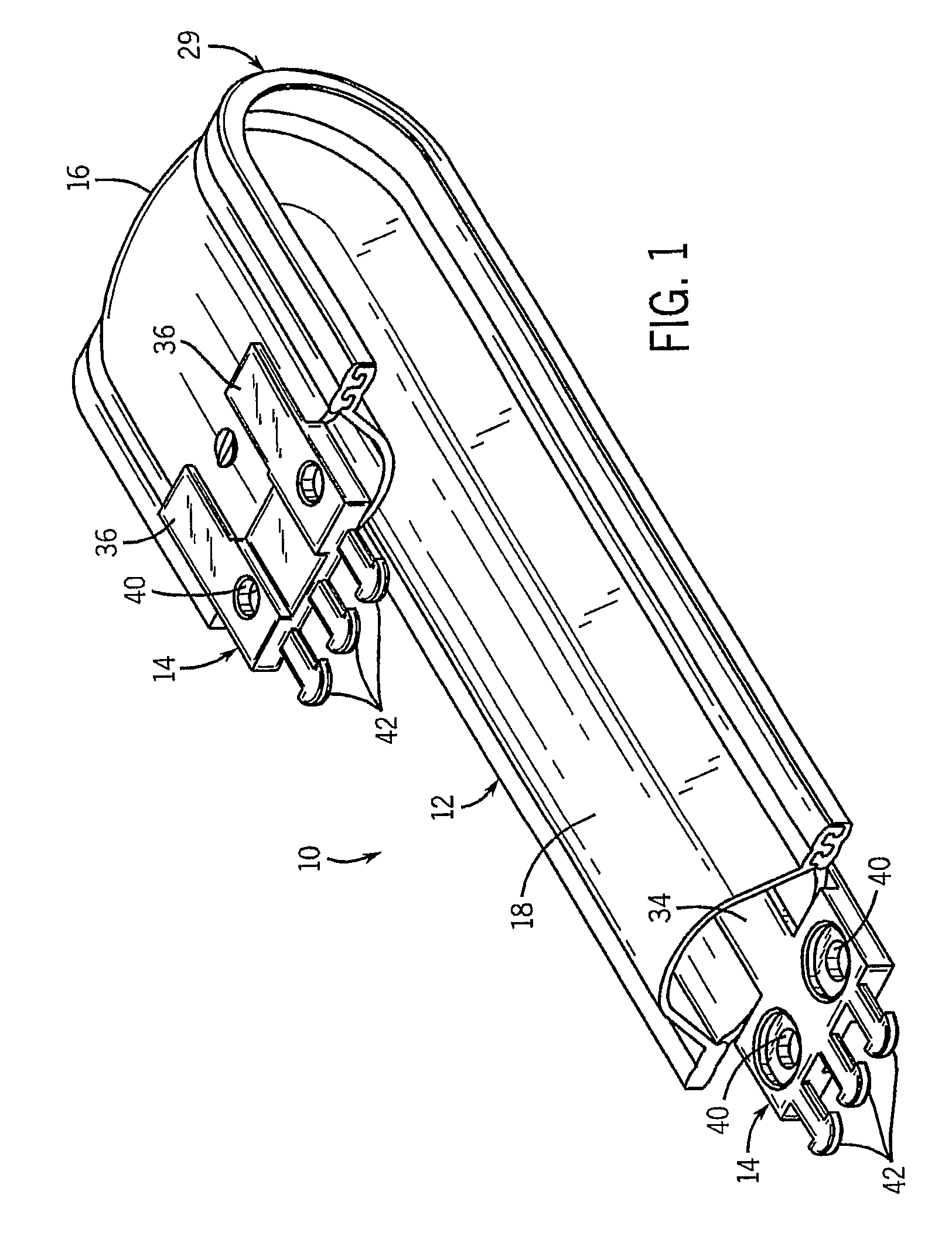Monolithic Enclosed Cable Carrier
a cable carrier, monolithic technology, applied in the direction of cables, insulated conductors, cables, etc., can solve the problems of difficult handling in long sections, difficult manufacturing, assembly and disassembly, etc., to reduce the size of the space, easy to load, and pliable and soft material
- Summary
- Abstract
- Description
- Claims
- Application Information
AI Technical Summary
Benefits of technology
Problems solved by technology
Method used
Image
Examples
Embodiment Construction
[0020]FIG. 1 illustrates a cable carrier 10 of the invention including a carrier body 12 and two end connectors 14 attached to the body 12. Referring to FIGS. 2 and 3, the body 12 is formed in one piece, having a first side 16, a second side 18, a first edge 20 that is integral with the first and second sides 16 and 18, and a second edge 22 that is formed of a releasable connection between the free edge 24 of the first side 16 and the free edge 26 of the second side 18. Each of the free edges 24 and 26 form tongue and groove interlocking structures 25 having undercut shoulders 27 that interlock for the full length of the body 12 to provide a seal for the full length against dust, dirt, and moisture entry to the interior space 30 that is between the first and second sides 16 and 18.
[0021]In the preferred form as illustrated, the edge 22 is a zip lock-type seal, but any structure which is releasable and when engaged closes the interior 30 of the body 12 could be used. To load cables a...
PUM
| Property | Measurement | Unit |
|---|---|---|
| thick | aaaaa | aaaaa |
| thickness | aaaaa | aaaaa |
| thick | aaaaa | aaaaa |
Abstract
Description
Claims
Application Information
 Login to View More
Login to View More - R&D
- Intellectual Property
- Life Sciences
- Materials
- Tech Scout
- Unparalleled Data Quality
- Higher Quality Content
- 60% Fewer Hallucinations
Browse by: Latest US Patents, China's latest patents, Technical Efficacy Thesaurus, Application Domain, Technology Topic, Popular Technical Reports.
© 2025 PatSnap. All rights reserved.Legal|Privacy policy|Modern Slavery Act Transparency Statement|Sitemap|About US| Contact US: help@patsnap.com



